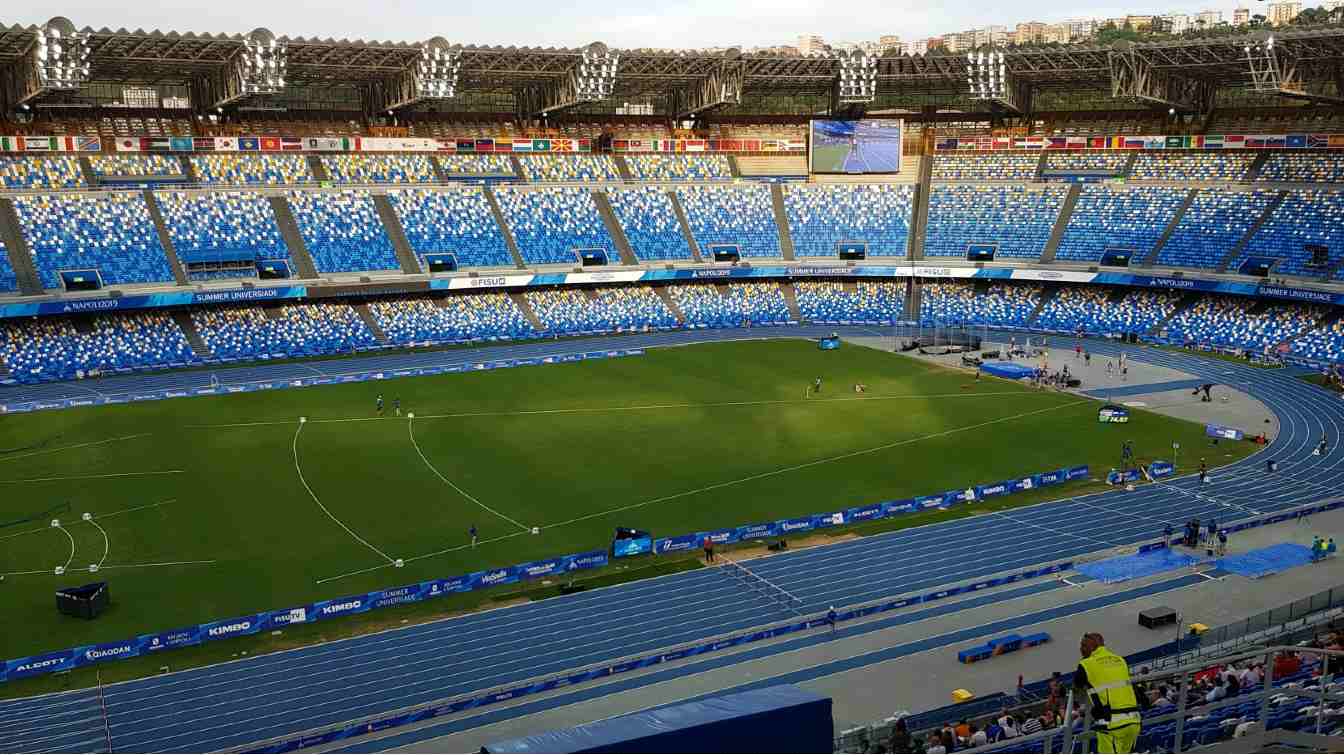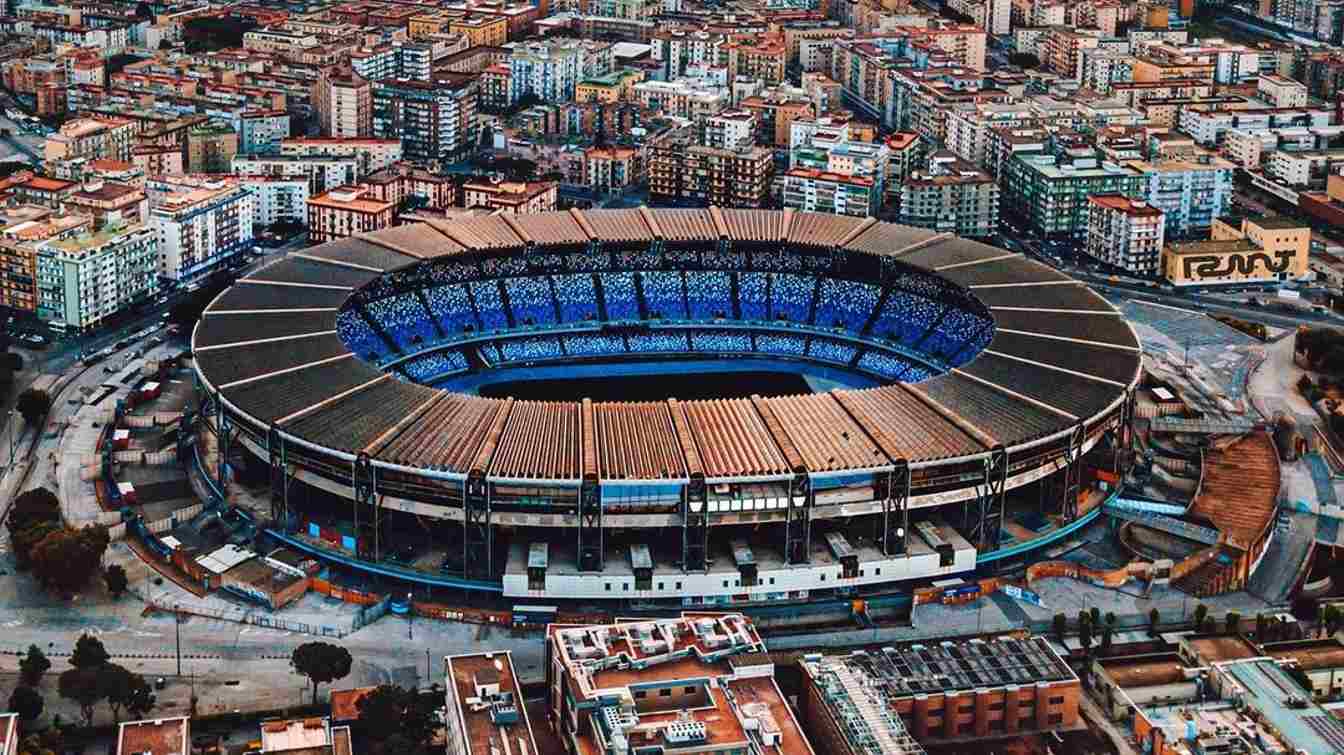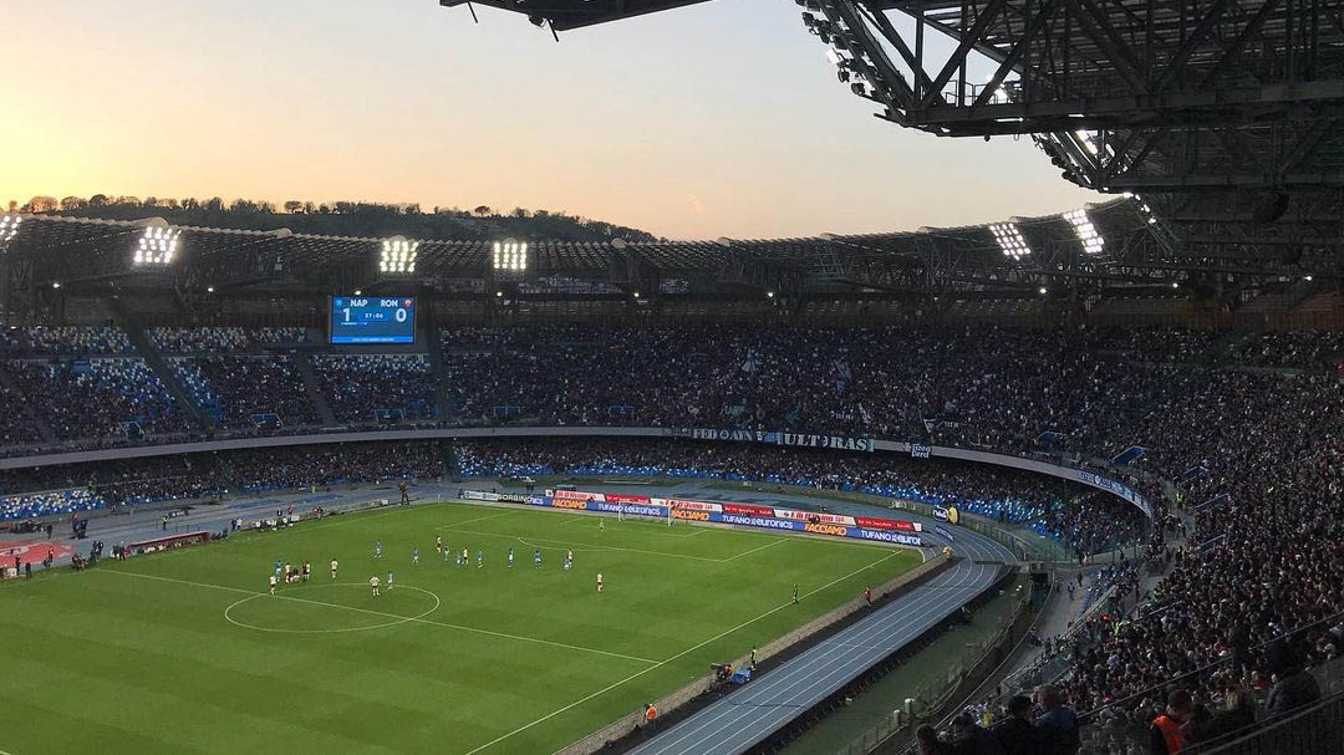Italy: New Napoli stadium in volcanic danger zone? Stubborn De Laurentiis
source: StadiumDB.com; author: Jakub Ducki
 To begin with a short geography lesson. Naples is the capital of the Campania region and, in the area around the Phlegrean Islands, is the caldera of a super-volcano with a diameter of 13 km, lately increasingly ‘scaring’ the inhabitants of the area. Simple? Apparently not for everyone, as president Aurelio De Laurentiis has plans to move the stadium closer to the danger zone site which scientists advise against.
To begin with a short geography lesson. Naples is the capital of the Campania region and, in the area around the Phlegrean Islands, is the caldera of a super-volcano with a diameter of 13 km, lately increasingly ‘scaring’ the inhabitants of the area. Simple? Apparently not for everyone, as president Aurelio De Laurentiis has plans to move the stadium closer to the danger zone site which scientists advise against.
Advertisement
The city authorities have other plans
If De Laurentiis wants to build a stadium in Bagnoli, the project has to be judged by the government commissioner, go to the city council and be approved by Rome, but another 30 years would be lost,
says the mayor of Naples. So far, there have already been several meetings between the city council and Napoli's president, from which one thing is clear: there is already a conflict of interest at this level.
The city of Naples intends to carry out a makeover of Stadio Diego Armando Maradona in connection with Euro 2032. At the same time, Gaetano Manfredi is trying to convince Napoli's president to bet again on the old but still functional Stadio San Paolo and abandon the project for a new arena, despite De Laurentiis' statements two months ago: I will not rebuild the Fuorigrotta facility, but I will build a new stadium in Bagnoli.
Unfortunately for him, however, this site has already been dedicated for other purposes according to the plans. We are seriously analysing every proposal made by the mayor of Naples, but the Bagnoli proposal has technical difficulties. We are in a place of national importance, i.e. under the observation of the government for several years with a decree,
- Said before the microphones of Spazionapoli.it, Naples city councillor Luigi Carbone.
The Bagnoli area, according to the government's decision, should first be recultivated and then Invitalia should be commissioned to build and design a sports park and a city park. The government has allocated €1.2 billion to complete an investment sufficient for Bagnoli. I respect De Laurentiis, but in my opinion he chose the worst place to build the new stadium, also because of the problems of the area.
It is not only Gaetano Manfredi who sees significant worry in this idea, but also scientists.
Scientist says an ‘absolute NO’
It turns out that the area in question is even closer to the epicentre of local earthquakes, in the danger zone, as volcanologist and principal scientist at the National Institute of Geophysics and Volcanology (INGV), Giuseppe Mastrolorenzo, warns. From an interview with the Neapolitan website areanapoli.it, we learn more details about it.
The area of the city is divided into two risk areas: red, considered a high-risk zone - people in this area should evacuate first, and yellow - where rescue can take place second. In addition, an inner zone has been mapped in the recent past - a particularly dangerous zone where the new Naples facility would be located, according to plans.
It is a large caldera that can cause eruptions ten times stronger than those on Vesuvius, even those that destroyed Pompeii,
warns Mastrolorenzo. Under the current contingency plan, around 500,000 people would be affected, but based on volcanological findings and mathematical simulations, the entire population living in the greater Naples area, more than three million people, could be affected.
In the event of an emergency, you need to have a plan to evacuate people from the stadium, and with a planned capacity estimated at 100 000 seats, this may not even be possible. In the event of a seismic or volcanic emergency, the involvement of the rescue services would be very difficult and the evacuation would introduce confusion and chaos, which is undesirable in such operations. A crowd of fans in one place would cause a large traffic jam, delaying the exit from the affected area.
In addition, the stadium would have to meet standards that would prevent it from falling apart like a house of cards in an earthquake. In practice, all stadiums built of reinforced concrete and steel have to be constructed to withstand several thousand tremors over an extended period of time. During Napoli's matches in the current stadium, quakes of magnitude 2 have been measured due to the simultaneous surges of spectators, and the most common tremors caused by a supervolcano can be twice that size. At the Phlegraean Fields, on the other hand, there is additionally bradyseism, meaning that the whole ground is constantly rising and falling over decades.
 © GaeC86
© GaeC86
A safer alternative for De Laurentiis
The current location of the Stadio Diego Armando Maradona is already outside the immediate danger zone and is directly connected to major roads and motorways. In the event of a major volcanic eruption, it could also be hit by clouds of gas and ash, as shown in a simulation carried out by the Geopop science channel.
Asked if there is a similar situation of a stadium in a volcanic zone, the scientist replies: There are no situations similar to Naples because we are in the special case of a city inside a volcano, not near it.
Mastrolorenzo and other scientists have already warned on several occasions that an unforeseen eruption could occur at any time in the Phlegrean Fields.
Mastrolorenzo advises: Given the new discoveries, today it would make more sense to build a new facility, for example in the north of Naples and, in short, outside the high-risk area. In my opinion, construction should take place in sparsely populated areas and, above all, away from the caldera area, at least twenty kilometres from Pozzuoli.
This is not the first time…
Last month, Napoli club's current arena, which is not in a high-risk zone, did not survive the recent earthquake. The B stand suffered the most damage, particularly in sector B4. After a thorough inspection, technicians found that the structure on which the stands rested had cracked. According to the schedule, the work costing €113,000 should be completed by the end of May 2024.
Azzurri boss De Laurentiis also wondered about a new stadium in San Giuseppe Vesuviano, a municipality at the foot of Vesuvius, where construction is not allowed because of the volcanic danger. Mastrolorenzo is also disgusted by this: A sports centre can be built anywhere if the urban planning requirements are met, but if it is built in a red zone, such as the Vesuvius zone, where construction is forbidden, there should not be an excessive influx of people and vehicles, as this would inevitably increase the risk.
The recent series of earthquakes on Vesuvius has also indicated that the dreaded volcano is far from extinct. Napoli president De Laurentiis' ideas are probably also far from expiring. Let's hope that in the future the safety of the people on such a dangerous site will be more important than business...
Advertisement
 StadiumDB
StadiumDB ©
©  ©
©